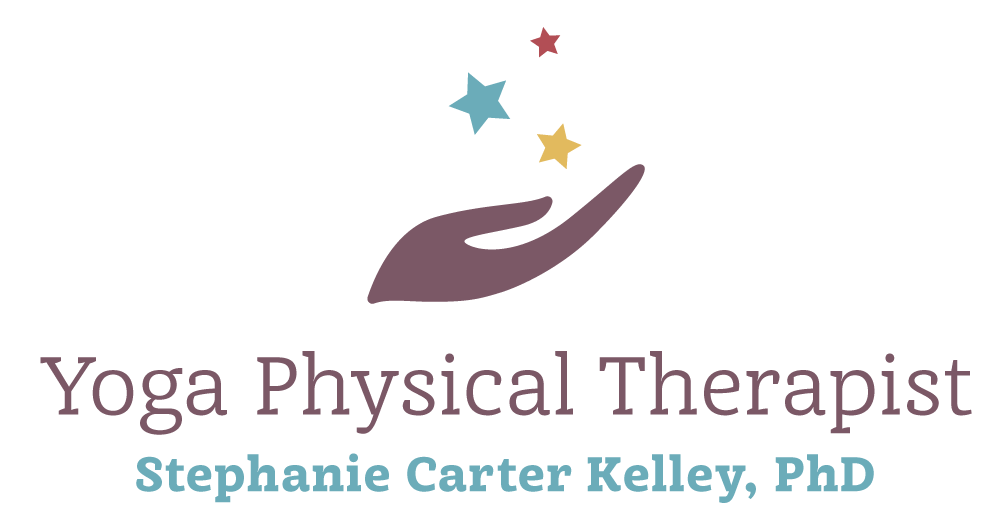Most of my students attend class once a week. And they know (because I have told them) that this is not enough yoga to "correct" what ails you. I understand the limitation of attending a class one time a week. Going to class includes schedule coordination, travel to the studio, and cost of the class each week. So read on to find some ways to start a home practice.
For those that primarily sit during the day and want to use yoga for postural correction, I believe that once a week may help to prevent the posture from getting worse. But I don't think that once a week is enough to make changes in the posture that has already become hunched. Once a week will provide modest strength gains and help to control pain, but change will be slow.
So many of my students ask, "what should I do at home?" I will always say that "some yoga is better than no yoga" and even 10-20 minutes each day is a great start. First, look for ways to integrate yoga into your day. When you are in class, observe what feels good and do some of that at work or at home. Maybe for you it is 3 part breathing to ease muscle tension, cat/cow in sitting or on hands and knees to mobilize the spine and hips, or some Tummy Time to get you into extension. Soon, your body will be craving a little more activity and movement.
So if you are new to yoga and/or living with pain, here's a plan to help you:
- Schedule time into each day to do gentle movement. I am most disciplined when I get up 30 minutes early and start my day with yoga. It will take at least 21 days to develop the habit, so persevere in those first 21 days. If you feel stiff in the morning, take a shower first and that will help you with a little more ease.
- Start with the movements that you remember from class then try my free video: "Core on the Floor". It is 40 minute in length, but about 30 minutes of physical poses, all performed on the floor. If you don't have time for all 40 minutes, just do what you have time for and build up to doing it every day.
- As this video gets easier (2 weeks or so), add the "Gentle Yoga, Core on the Floor plus Hips". This one is about 50 minutes in length and builds on "Core on the Floor". If you don't have 50 minutes each day, continue to do about 20 minutes of gentle movement on the days you don't do the longer program. Build to doing the long program 2-3 times a week.
- As you progress (in another 2 weeks), try the "Spine Health" videos. Each video is slightly different, but I focus on common impairments for people with back pain and stick to basic poses. If you miss class, these can take the place!
- Keep doing the longer videos (or full class) 2-3 times each week. Still doing 20-30 minutes of gentle movement on the other days for a total of 5-6 days a week. Sure, take a day off each week!
- As you begin to feel better, add a 4th day of a long video.
Remember that the more sedentary you are when you start this program, the longer it will take to build up to 2 or 3 days of the longer yoga programs. That's OK! Take your time building strength and mobility. Also recognize that each day may feel different. Progress doesn't need to take place each day. If you start, but don't feel like doing the long program, back off. The key is being aware of how your body feels each day and honoring those feelings.
I believe that yoga is best on your own with guidance on a regular basis from a good teacher. That way there are fewer reasons to NOT do yoga (i.e. travel, $$, etc.). Establishing a home practice is about taking care of yourself every day.
If I haven't seen you in a while in class, know that I miss you. But I get it and I hope you will try my new videos because I made them with you in mind.
Namaste,
Stephanie




